Strike a Pose: Yoga for Young People, from Babies to Teens
Downward dog, mindful breathing, and other practices enrich public library programming.
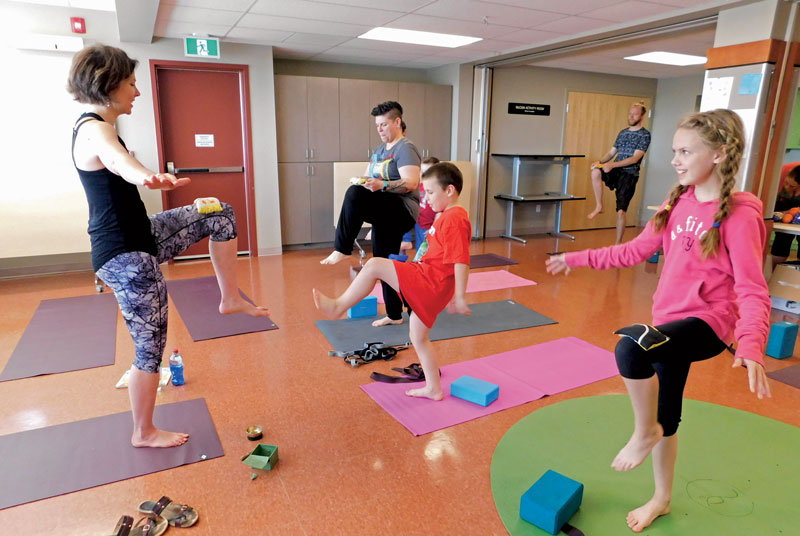 |
Jenn Carson leads a balance challenge at the L.P. Fisher Public Library in Woodstock, New Brunswick, Canada.Photos on this spread courtesy of L.P. Fisher Public Library |
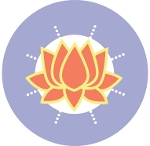
Of all the magical story time moments I’ve witnessed as a librarian, the most mesmerizing was watching a yoga instructor quiet a room of 20 rioting, rambunctious toddlers with a glitter calming jar.
The story time she had just led had been high energy—maybe too high energy—and the toddlers suspected that play time was coming up next. They eyed the cabinets where I kept the buckets of toys. That’s when the instructor, a consummate professional, pulled the jar from her bag, gave it a manic shake, and set it in the middle of the floor.
“I need everyone to look at this!” she cried and dropped to the floor, chin resting on her hands as she watched the colors in the jar swirl and swirl.
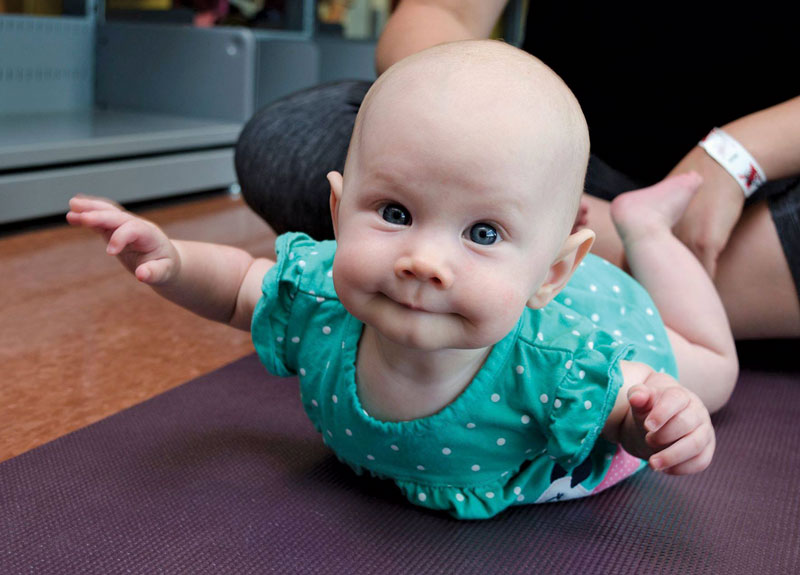 |
A young enthusiast at the L.P. Fisher Public Library |
The kids knew something important was happening with that jar. One by one, they lay on the floor, placed their chins on their hands, and watched. A hush fell over the room. I wondered what the heck just happened. It never occurred to me that all it could take to wrangle a room of hyped-up two-year-olds was to abandon all control and lie down.
The instructor breathed deeply, audibly. Soon, the kids were breathing with her, following her lead. “Watch,” she said. “Until the last color falls.”
That was 10 years ago. Since then, public libraries across the country have joined the movement to offer yoga to patrons of all ages, from toddlers to pregnant people, seniors, and everyone in between.
Tips for Tots1. Keep favorite “tools” on hand to pull out as needed. Breathing exercises focus frenzied toddler energy to the next task. Silly stretches bring the energy up and help the room relax and play together. I start each story time with a stretch that leads into “Head, Shoulders, Knees, and Toes,” which we repeat faster and faster until everybody is giggling and ready to have fun. Reach up high / Reach down low / Reach to / Reach fro / Reach all the way around / Now find your head, your shoulders, your knees, and your toes / Your eyes, your ears, your mouth and your nose. Move into “Head, Shoulders, Knees, and Toes.” 2. Do that again! Younger children need repetition to encourage strong brain development. Don’t be afraid to repeat the same yoga activities from program to program. Consider setting a movement to repeat or build on at each story time. Children will enjoy the chance to master a movement before being asked to move on to the next. Yoga stretches frequently mirror shapes of animals. Use beginner poses, such as downward dog, happy cow, cobra, crow, and more, to introduce children to easy stretches one by one. By the end of the season, you’ll have a full zoo! 3. Balance it out. Carson uses beanbags to increase balance and focus. Children lie on their backs and balance the bags on their feet, then practice passing them from partner to partner. They can also place the bags on their heads and walk around the room, keeping the bags in place. If they fall, they pick them up with their toes or elbows—no hands allowed! “This all works on the vestibular system, timing, planning, and gross motor skills. Very fun!” Carson says. |
Jenn Carson, author of Yoga and Meditation at the Library: A Practical Guide for Librarians (Rowman & Littlefield, 2019) and Get Your Community Moving: Physical Literacy Programs for All Ages (ALA Editions, 2018), says that when she started offering yoga classes for children at her public library in the early 2010s, it was very much an experiment—with an unexpected outcome. Combining yoga with story time turned out to be wildly popular.
“Kids would come to our story times—babies, really—and we didn’t have a lot of physical movement, other than fingerplays,” says Carson, now director of the L.P. Fisher Public Library in Woodstock, New Brunswick, Canada.
Unable to sit still through a story, some children would dart out of the room as soon as Carson opened a book.
“I thought there had to be some way to harness what was going on with them; engage them with the story while keeping them moving,” she says.
Drawing from her knowledge as both a yoga instructor and autism support worker, Carson started offering movement-rich story times. She recognized the unspoken need for stimulation, and, to her, incorporating yoga movements was a natural solution.
Soon, children were darting back into her story time room for more—especially, Carson says, those neurodivergent children who craved the free-flowing atmosphere.
“All sorts of lights were going off in my brain, like…this is really working well, and there must be a reason for it,” she says.
That success prompted Carson to create her Yoga in the Library website, where she posts resources, videos, and more for those librarians hoping to incorporate yoga into their programs.
Noah Lenstra, then a researcher with the University of North Carolina (UNC) at Greensboro, contacted Carson, and together they worked to connect other libraries around the country hosting wellness programs.
In 2016, that resulted in Let’s Move in Libraries, a collaborative of librarians in the United States and Canada that promotes physical and emotional health with programs that incorporate movement, meditation, and outdoor experiences. Lenstra, now associate professor of library and information science in the School of Education at UNC Greensboro, still runs it. According to the organization, 72 percent of libraries across the country offer yoga.
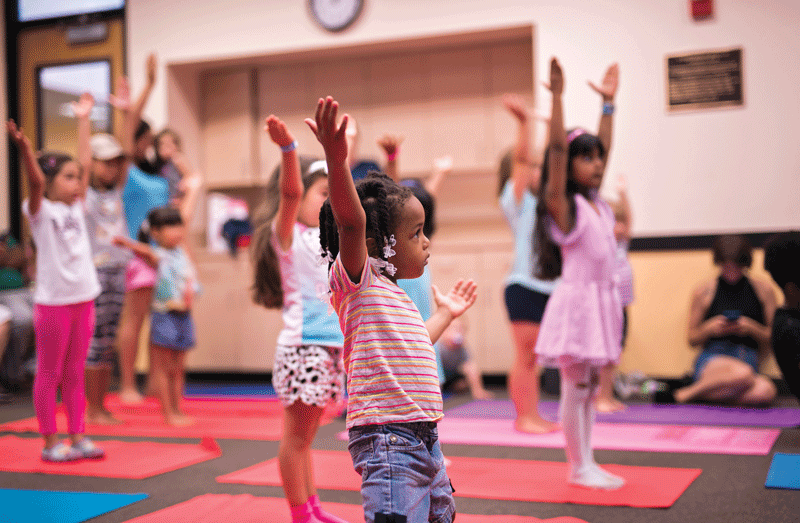 |
Yoga at the Orange County (CA) Library System Southwest Branch, a member of the Let’s Move in Libraries network.Photo courtesy of Orange County Library System |
Tips for tweens and teens1. Lights out! Asking body-conscious tweens and teens to try new moves and stretches together can be intimidating. Turn off the lights to help them focus on their own bodies and how they feel in the stretches without self-consciousness. Throw in some glow bracelets and anklets for extra fun. 2. Pair up. Try paired yoga for those middle schoolers who can’t bear to part with their bestie. Call-and-response yoga allows them independence to set the moves they want to try while staying partnered with a friend. A beach ball or large die are great tools to facilitate this; mark the ball or dice with moves the group would like to try. Then have them roll the die or toss the ball back and forth. Whatever move the ball/die lands on is the one the catcher has to do! For daredevils, consider basic acro-yoga moves to get everyone laughing. Just make sure to practice on a soft surface! 3. Debrief the day. Middle school is an incredibly stressful time. Start the yoga session with a short breathing exercise to center everyone. Then ask them each to share two words—one symbolizing a difficult moment in their day and one for the best moment of their day. Ask them to breathe in and focus on their “best” word, then breathe out their “difficult” word. Breathe in the good, let go of the not-so-good. Allow space after the program for them to talk about their issues with a trusted adult or friend if needed. |
Helping teens “be”
Like many librarians, Danielle Ave, the youth services supervisor for the Cottonwood (AZ) Public Library (CPL), developed a yoga program during and after the pandemic. Ave says that their families and teens emerged with “a sense of shell shock” after spending so much time isolated at home. Not knowing where else to go, they would come to the library to just be.
“Kids would tell us they hadn’t been outside much,” Ave says. She and her staff also noticed that they weren’t getting a lot of quality sleep. Yoga and meditation seemed an ideal way to shore up their mental health and provide a safe space for them to explore and meet others.
Ave attended the Arizona State Library’s conference in 2022 and learned about the Arizona Librarian Enhancing Resilient Rural Communities mini-grants. She immediately encouraged her colleague, Elizabeth Hansen, to apply.
Thanks to the grant, CPL funded a series of summer outdoor programs that were a major hit with the teen community. One included a field trip where teens were taken to a beautiful Sedona location. A professional yoga instructor took them through yoga sessions, hikes, and breathing and relaxation exercises, all geared toward getting them thinking about what their bodies needed. After receiving the grant a second time, CPL will offer the series again this year. The library is exploring community partnerships to maintain the program after that.
The New Orleans Public Library (NOPL) was already offering popular yoga and movement-based programs at various branches when Christine McCourtney, NOPL head of early childhood literacy, turned her focus to mental health and stress reduction in the prenatal phase.
McCourtney partnered with Shanda Domango Brown, founder of Domango Training, a local business devoted to physical and spiritual health, to offer prenatal meditation and movement classes for pregnant people.
The classes were simple—30 minutes of easy stretches and breathing exercises held during the lunch hour. “Just a moment to take for yourself,” McCourtney says.
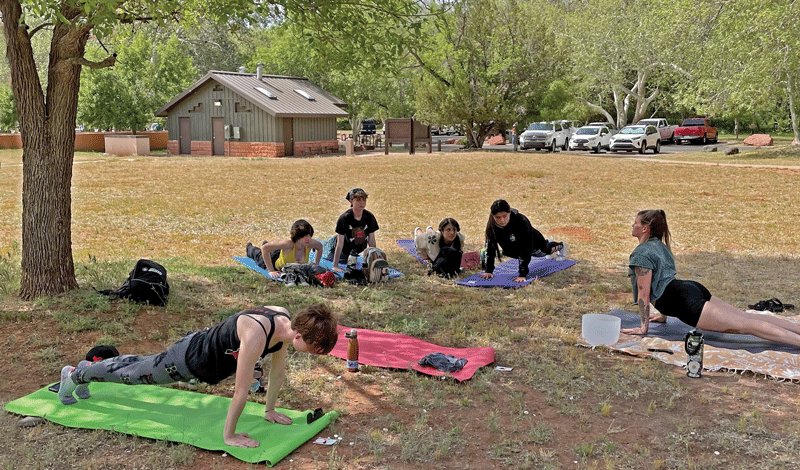 |
Outdoor yoga for teens organized by the Cottonwood (AZ) Public Library |
Self-care for kids
Leigh Ramey, youth services consultant for the South Carolina State Library, knows that adults may be familiar with the concept of self-care. But it’s important to remember that children need self-care, too, she says. Quieting young minds is an added benefit.
Ramey, who presented “Namaste at the Library: Yoga Programs for Youth” at the 2022 Association for Library Service to Children Conference, believes that incorporating yoga movements and moments for breath and meditation in story time for young children is essential.
“So many times, I’ve seen three-year-olds lay down for savasana and be quiet and still,” Ramey says. “To me, it shows that child really needed that time to rest.
“Little children don’t have the ability yet to voice that they’re frustrated or tired,” Ramey adds. “Yoga programs give us an opportunity to teach children to self-regulate. It’s another level of support we can offer at the library.”
When including yoga in story time, especially with wiggly toddlers, Ramey suggests some best practices.
Foremost, “Be confident,” she says. “You know story time, you know how to work with kids, and you know crowd management.” That, Ramey says, is half the battle.
Often, she talks with librarians who think they need to bring in a professional to deliver a “true” yoga experience. Not so, she says. “There are plenty of resources, plenty of professional development books. You can do this!”
Another key suggestion: always have backup plans in the form of props, books, and games. “You don’t know how it’s going to go, and you have to be ready to change it up,” she says. Ramey recommends scarves, a Hoberman sphere, a parachute, bubbles, and stuffed animals, which can be used as breathing buddies the kids place on their bellies to watch go up and down as they breathe slowly.
Carson’s 16 years of leading library yoga sessions have allowed her to learn what works and what doesn’t. She keeps a lot of metaphorical tools in her story time toolbox. Her book is packed with recommended structures for toddler yoga classes, breathing exercises, and book suggestions for the new-to-yoga librarian, hard won from years of trial and error.
“When I first started, I would get so internally agitated if my program didn’t go exactly the way I planned,” she says. Now she focuses on fun, not on completing a specific routine.
“I learned how to make my programs more child-led. I followed their cues and paid attention to what they needed,” Carson says. “And through that I became a better teacher.”
As Ramey says, “You have to be flexible—pun intended.”
Now, getting back to that glitter jar that amazed me 10 years ago. What did I learn from it? Before adding meditative moments to my programs, my proclivity to rush through life extended to story times. Now, in story time, I pause. I wait. I rub my hands together to make them warm and encourage the littles to join me. We put our hands on our cheeks, our chests, our bellies. Breathe in and out. We are here now, together.
Lisa Bubert is a writer and children’s librarian in Nashville, TN.
RELATED
The job outlook in 2030: Librarians will be in demand
The job outlook in 2030: Librarians will be in demand
ALREADY A SUBSCRIBER? LOG IN
We are currently offering this content for free. Sign up now to activate your personal profile, where you can save articles for future viewing






Add Comment :-
Be the first reader to comment.
Comment Policy:
Comment should not be empty !!!